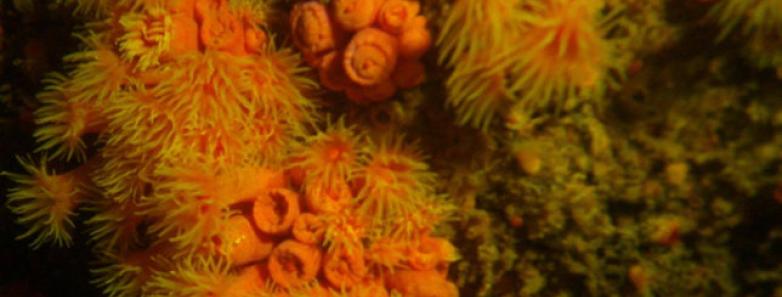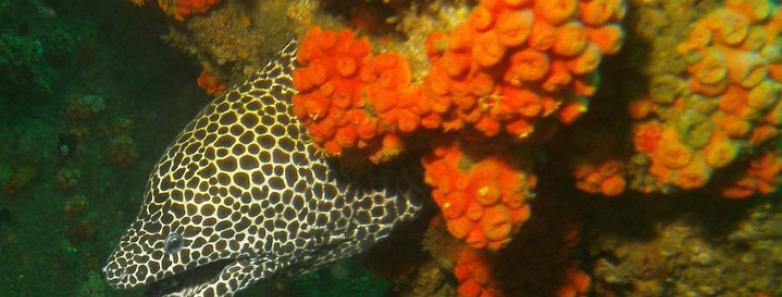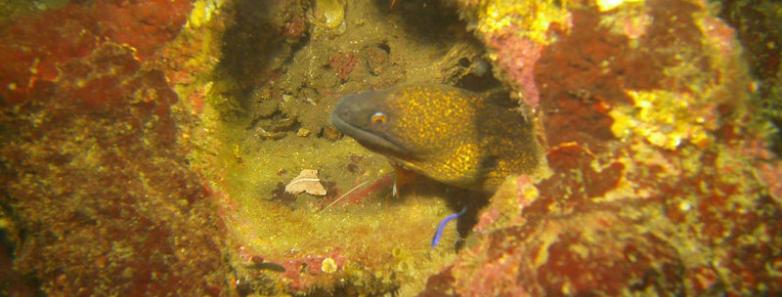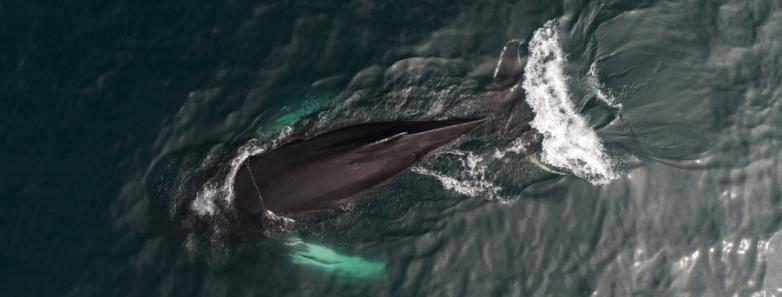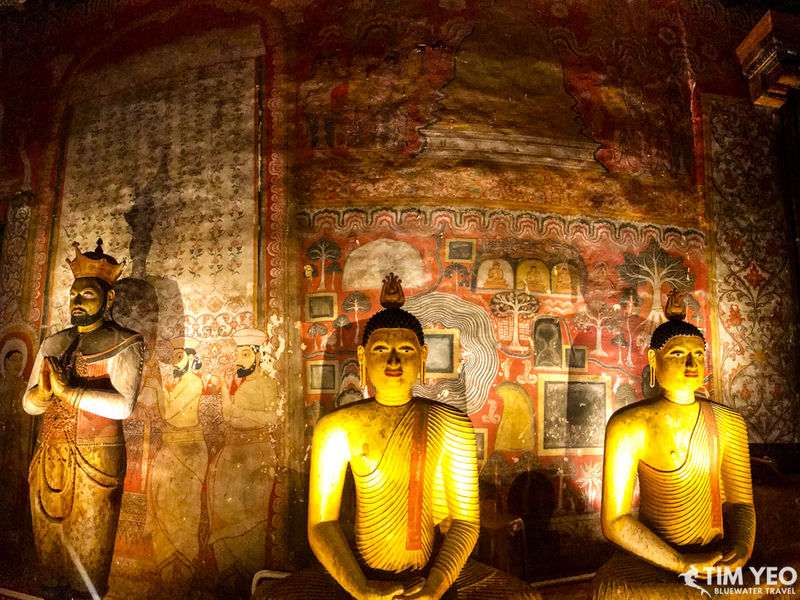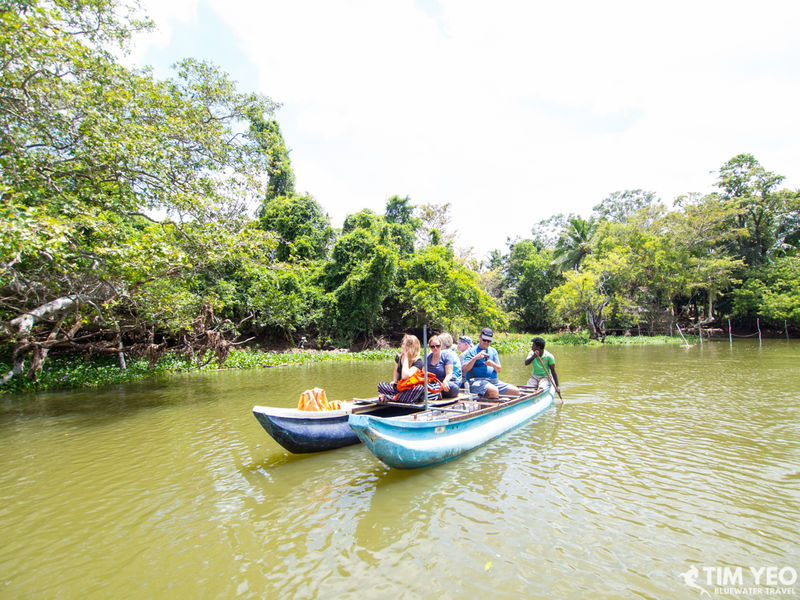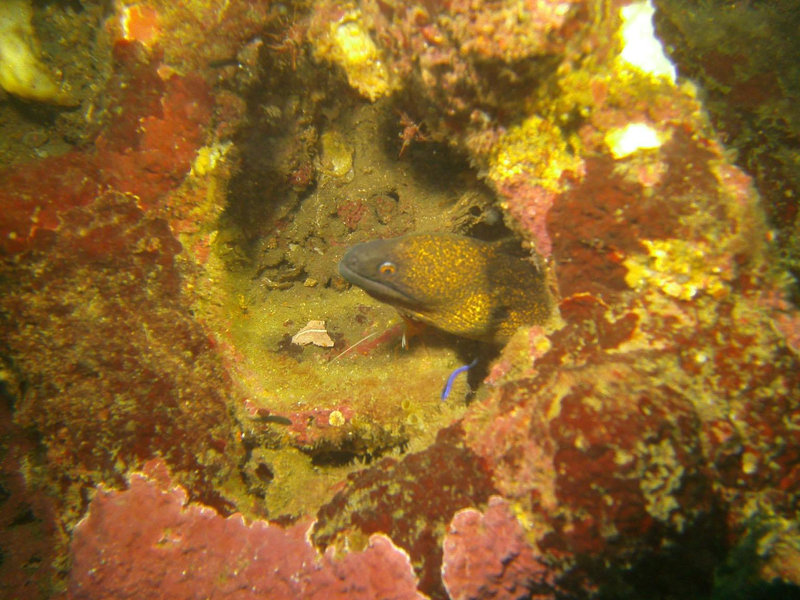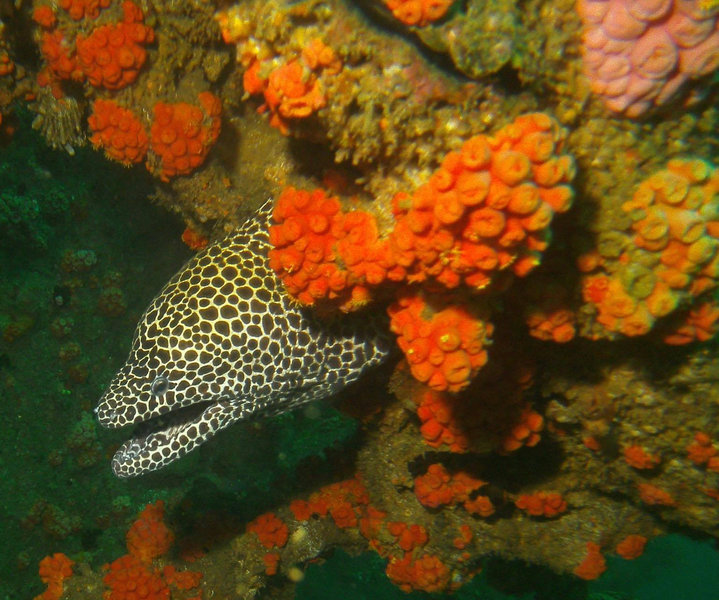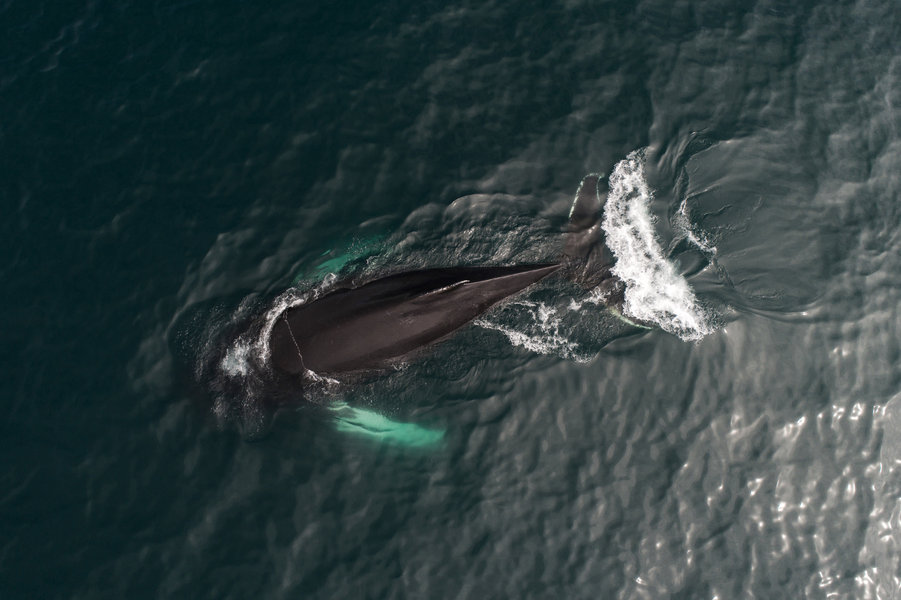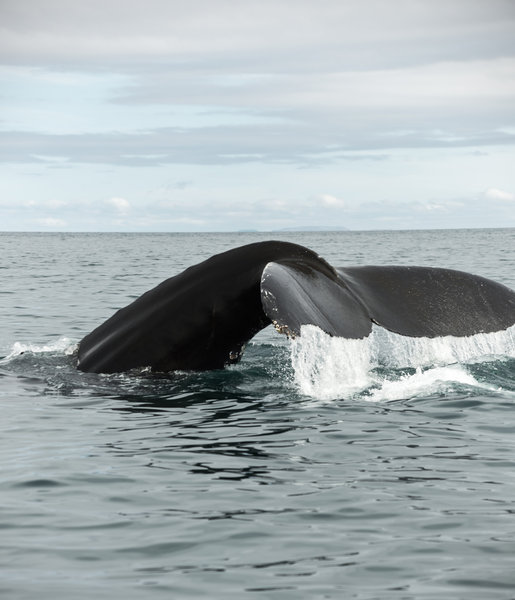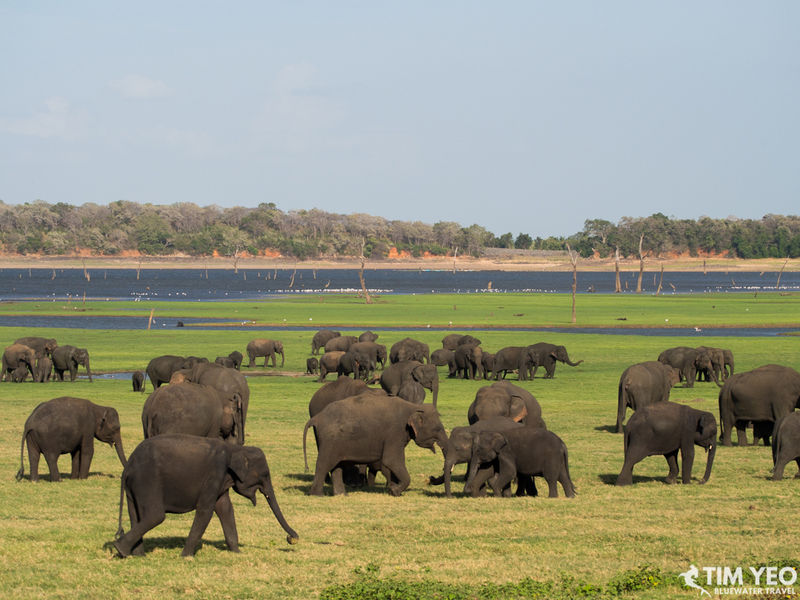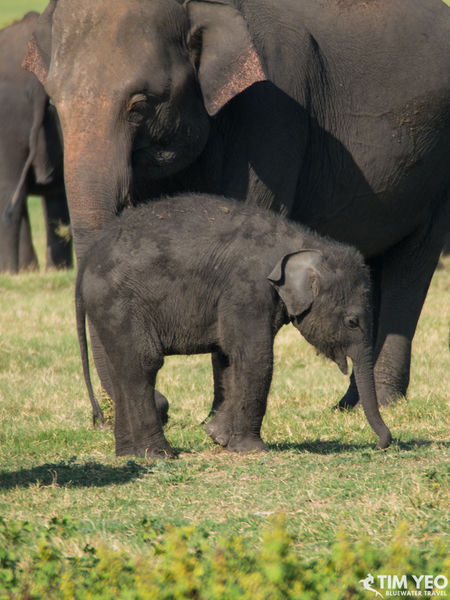SCUBA DIVING IN SRI LANKA
SRI LANKA DIVING HIGHLIGHTS
Boasting a wide variety of dive sites and year-round diving opportunities, those lucky enough to dive Sri Lanka’s exceptional wrecks and reefs will be amazed by the variety of marine life and range of experiences on offer.
JUMP TO:
Marine Life & Environment - Top Dive Spots - Diving Conditions
How to Get There - How to Dive Sri Lanka - Best Time to Dive
SRI LANKA DIVE RESORTS/LIVEABOARDS
Diving in Sri Lanka is almost exclusively land-based, and although there are no dive-specific resorts, there are many dive operators linked to the hotels.
INTRO TO SRI LANKA
Located off the southern tip of India in the Indian Ocean, Sri Lanka is an island country boasting almost 1,000 miles (1,600km) of coastline, much of which remains relatively undeveloped. As a key stopping-off point on the ancient Silk Road, and with an important maritime and trading history, visitors to Sri Lanka will find themselves immersed in a rich blend of cultures and heritages.
Below the water, Sri Lanka is no less diverse, with a variety of marine habitats ranging from wrecks to healthy reef systems with submerged ruins, caves, and dramatic offshore sites. Marine creatures big and small can be found diving Sri Lankan waters, with seasonal sightings of blue whales and sperm whales, as well as a plethora of pelagic hunters, the full catalog of Indian Ocean reef fish, and some reasonable macro sightings.
Where you dive in Sri Lanka will depend on the seasonal monsoon, and dive sites are open either on the east of the country from May to September, or the west from October to April. The majority of diving is concentrated around the southwest coastline and the capital, Colombo, however, the famous aircraft carrier wreck HMS Hermes is situated on the east of the island.
These are the main dive areas in Sri Lanka:
- Kalpitiya
- Towards the center of the west coast, Kalpitiya sits on a long, thin sand bar, separated from the mainland by a lagoon. While the town appears like the ‘place that time forgot’, there are some excellent shallow dive sites just offshore featuring some good macro photography subjects on rocky reefs.
- Negombo
- A 90-minute drive north of Colombo on the west coast, Negombo beach offers access to colorful inshore reefs teeming with fish, as well as the offshore reefs of Final Frontier. There are many popular dives in this area, including Barracuda Point, Derana Gala, and the remnants of a WWII fighter aircraft.
- Colombo
- Colombo offers access to the best wreck diving in Sri Lanka, with a dozen wrecks ranging in depth from 98 to 187ft (30 to 57m). There are also excellent reef sites around Colombo, such as Taprobane Reefs and the beautiful Gorgonian Gardens.
- Beruwala
- Deeper offshore sites featuring strong currents bring huge shoals of fish to the west coast Beruwala sites. Featuring magnificent rock formations in excellent visibility, this is a dramatic destination suitable for more experienced divers.
- Hikkaduwa
- Although small, this west coast town is upmarket, with luxury resorts spread along the beachfront and a main street of boutiques and nice restaurants. There is a range of dive sites of varying depth around 20 minutes from shore. Interesting underwater topography in the form of caves and overhangs hides plenty of macro photo opportunities.
- Galle/Unawatuna
- Famous for mile after mile of golden sandy beaches, Unawatuna offers excellent west coast diving with many wrecks and several rocky formations covered in black coral. This is one of the best places to regularly encounter Napoleon wrasse.
- Kalmunai
- On the east coast, Kalmunai is home to two significant WWII wrecks, the SS Athelstane and HMS Hollyhock. Both wrecks lie in 138ft (42m) of water, are incredibly scenic, and covered in life. A third wreck, the MV Ledra, is much shallower but has less to offer than the others..
- Batticaloa
- The easternmost town in Sri Lanka, Batticaloa is an exciting town offering exciting diving. The highlight of a dive trip here has to be the HMS Hermes, however, there are several other good wreck and reef dives close to shore that are covered in spectacular corals and sponges and teeming with large shoals of rainbow runners, fusilier, and sweetlips.
- Trincomalee
- The second-largest natural harbor in the world, the ancient east coast port of Trincomalee is littered with shipwrecks as well as the remains of some Japanese Zero fighters and British Hurricanes - casualties of WWII. There are also numerous reef dives here including Eel Rock (home to at least five species of moray eel), Black Tip Rock (where around 20 reef sharks gather each morning), and White Rock (a great place to find different species of ray).
WHEN TO GO
Diving Sri Lanka is possible year-round, although where you dive will be determined by the monsoons.
Back to Menu
SRI LANKA DIVING INFORMATION
MARINE LIFE & PHOTOGRAPHY SUBJECTS
Divers exploring Sri Lanka will discover creatures big and small in the island’s clear waters. Indian Ocean species abound, with sweet lips, clownfish, triggerfish, and batfish living on colorful reefs festooned in a patchwork of soft coral. Patrolling the reefs and walls, divers can expect to encounter barracuda, goliath grouper, humphead parrotfish, and Napoleon wrasse, while large schools of jack and trevally circle just out in the blue. Add in eagle and bull rays, several varieties of moray eel, and a couple of species of turtle, and the reefs are constantly delivering exciting encounters and great photo opportunities.
Most dive sites also offer a good smattering of macro, with ornate nudibranchs and other critters like shrimps a regular discovery. At the opposite end of the scale, the ocean’s biggest resident, the blue whale, along with sperm whales, whale sharks, and dolphins, can be spotted from the surface or heard underwater over the winter months.
TYPICAL DIVE IN SRI LANKA
Very few dives are from the shore, with operators using small boats to transport divers the 10 to 45-minute journey to the dive sites. Dives are normally two tank dives done in the morning.
SRI LANKA tech and wreck diving
Sri Lanka is quickly gaining a reputation as one of the best technical wreck destinations in Asia. Many of the island's deeper wrecks are only now being discovered, and while there are dozens of shallower wrecks offering opportunities for recreational divers, these deep wrecks provide a new and exciting frontier for technical wreck specialists keen to expand their repertoire.
Explore other exciting deep wreck diving destinations such as Truk Lagoon and Bikini Atoll.
On the east coast, the huge natural harbor of Trincomalee hides several military wrecks including the world-famous aircraft carrier, HMS Hermes (174ft/53m), the MFA Athelstane (138ft/42m), and the HMS Hollyhock (138ft/42m). The west coast Colombo region has numerous older wrecks to explore such as the SS Worcestershire (187ft/57m), the Taprobane North Wrecks 131ft (40m) and the MV Tricolor (213ft/65m), still under exploration.
Whale Watching IN SRI LANKA
Many visitors to Sri Lanka make the journey specifically for the island’s world-class whale encounters, with whale watching an increasingly popular activity. Home to the biggest population of blue whales in the world, sightings are most frequent during March and April, although they may be spotted year-round. Sperm whales, pilot whales, and various dolphin species may also make an appearance.
Please note that swimming with whales in Sri Lanka is illegal, and whale-watching regulations are in place but rarely enforced. If you choose to participate in whale-watching activities in Sri Lanka, choose a government-approved operator that does not offer any in-water experiences with the whales. Download the full regulations from the International Whaling Commission's website.
Interested in swimming with whales? Explore our fantastic whale swimming destinations.
DIVING CONDITIONS
- Water temperature: 80-86oF (27-30oC) year-round, with the highest temperatures in April and November.
- Visibility: Up to 100ft (30m), but can be affected by plankton blooms.
- Depth Range: 32-131+ft (10-40+m).
- Diving Difficulty: Suitable for all abilities, including technical.
BEST DIVE SITES
- Taprobane Reef, Colombo
- A fascinating offshore reef system including the famous Swami Rock, one of the most photographed dive sites in the world. Statues from a 17th-century temple and various sections of underwater masonry sit amongst large, pristine coral heads, setting an unusual scene for abundant marine life like large schools of fish and rays.
- Barracuda Reef, Colombo
- A dynamic and ever-changing site that promises huge amounts of life - from macro-critters to gamefish and everything in between. Such a plethora of species makes this one of Sri Lanka’s top dive sites, and visitors can expect to enjoy a multitude of reef species including lionfish, rays, and nudibranchs.
- Great Basses Reef, Kirinda
- Another offshore reef system approximately 6 miles (10km) off Sri Lanka’s southeast coast, there are numerous sites here offering interactions with larger pelagics and ocean-going species. Brisk currents attract jacks, trevally, and white-tipped reef sharks amongst wrecks, caves, and ruins.
- Cargo Wreck, Colombo
- A big and very popular wreck perfectly positioned for recreational divers. Originally named Pechur Breton, this 295ft (90m) long ship lies on its side between 65 and 108ft (20 and 33m). The open cargo hold provides an easy swim-through and the artificial reef is teeming with shoaling fusilier and hunting tuna, trevally, and king mackerel.
- HMS Hermes, Batticaloa
- One of the very few diveable aircraft carriers, HMS Hermes is a WWII relic that was bombed and sunk by the Japanese in 1942. She rests in 174ft (53m) of water, so is only accessible to technically trained divers. Forests of gorgonians and feathery soft corals adorn every surface of the superstructure, creating an underwater jungle habitat full of marine life. Large parts of the ship remain intact, including the control tower and its fixtures and fittings, and emergency lights with lightbulbs in situ.
- SS British Sergeant, Vakarai
- A casualty of the same raid that dispatched the Hermes, the SS British Sergeant was an oil tanker over 400ft (122m) in length. She lies in 78ft (24m) of water, split into two sections that sit at right angles and with the front half upside-down. The wreck is a haven for fish life, with huge schools of snapper swarming in and out of the gloom.
BEST TIME TO DIVE SRI LANKA
Diving is possible in Sri Lanka year-round, with coastal regions enjoying average air temperatures of 77-86oF (25-30oC). During the summer months of May to September, the east and north coasts enjoy dry, sunny days while the west and southwest coasts are hit by rain. Over the winter months of October to February, the seasons reverse, with the west and southwest dive sites favorable for diving while the east and north regions experience the monsoon.
December to mid-April is peak tourist season and the southwest of the island can become busy.
Back to Menu
TRAVEL INFORMATION
HOW TO GET TO SRI LANKA
Flights from the US into the main airport of Bandaranaike International Airport (CMB) will transit through the European or Middle Eastern hubs. Direct flights are available from Europe and Asia. Once in-country, it is relatively easy to get around with trains, buses, taxis, and tuk-tuks all readily available.
HOW TO DIVE SRI LANKA
Visitors have a choice of diving on the northeast or southwest side of the island, depending on the time of year. There are accommodation options for all tastes and budgets, from homestays and lodges to hotels, resorts, and villas. There are also a good number of eco options. Numerous dive operators in the main dive areas work with the hotels to offer day trips by small boat out to the wrecks and reefs.
OTHER THINGS TO DO IN SRI LANKA
Sri Lanka is a diverse country full of rich cultural experiences, plenty of activities, and loads of amazing wildlife. For those who want to stay near the ocean, the south coast has some world-class surf venues, and the island’s many miles of coastline offer up countless undeveloped palm-fringed beaches.
Nature lovers can take whale and dolphin watching trips as well as revel in the top-side wildlife in one of the country’s several national parks. A quarter of Sri Lanka’s habitat is protected and 16% of species are endemic, making for a unique safari trip.
For another great diving/safari destination, check out diving Zanzibar, Tanzania, and Kenya.
Sri Lanka has a wealth of well-preserved UNESCO sites, from the sacred city of Kandy to a towering rock fortress, ancient cave temples, and 10th-century ruins. Add to this the Tea Country mountain region with its lush green jungle and tea plantations, high-end accommodation, and cooler climes, and there really is something for everyone.
Check out the recap of our 2019 Sri Lanka topside adventure here.
Back to Menu
OTHER USEFUL INFORMATION
Practical INFORMATION
- Currency: Sri Lankan Rupee (LKR)
- Language: Sinhala and Tamil, although English is widely spoken
- Time Zone: India Standard Time (GMT+5:30)
- Electricity: 230V
Back to Menu
GOT QUESTIONS? READY TO BOOK?
Call us today at +1-310-915-6677 or email us info@bluewaterdivetravel.com
And let us book your dream vacation!
UNDERWATER IMAGES
Coming Soon!

